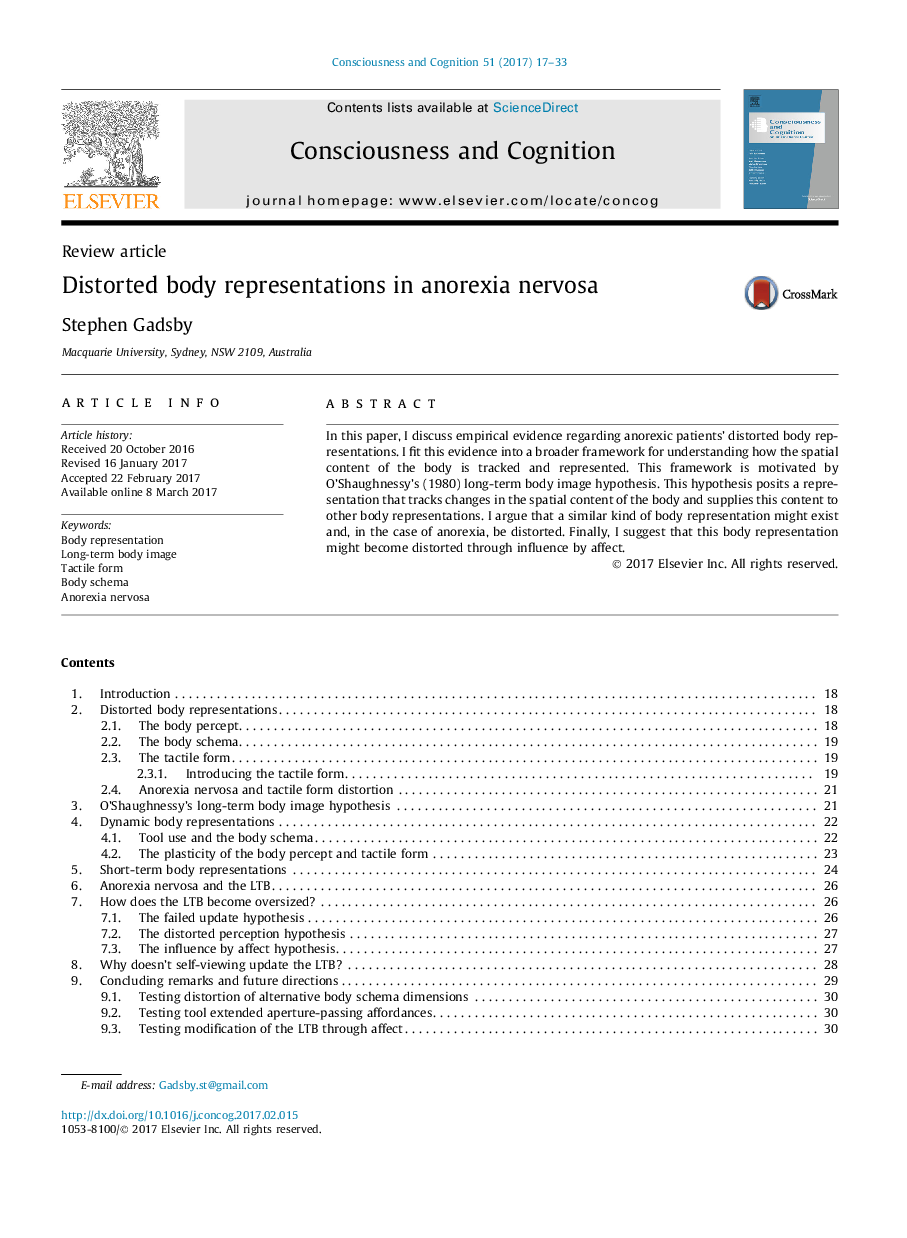| Article ID | Journal | Published Year | Pages | File Type |
|---|---|---|---|---|
| 5041853 | Consciousness and Cognition | 2017 | 17 Pages |
â¢Evidence of distorted body representations in anorexia nervosa patients is reviewed.â¢A new framework for how spatial content on the body is represented is proposed.â¢This framework is applied to understanding the reviewed evidence.
In this paper, I discuss empirical evidence regarding anorexic patients' distorted body representations. I fit this evidence into a broader framework for understanding how the spatial content of the body is tracked and represented. This framework is motivated by O'Shaughnessy's (1980) long-term body image hypothesis. This hypothesis posits a representation that tracks changes in the spatial content of the body and supplies this content to other body representations. I argue that a similar kind of body representation might exist and, in the case of anorexia, be distorted. Finally, I suggest that this body representation might become distorted through influence by affect.
